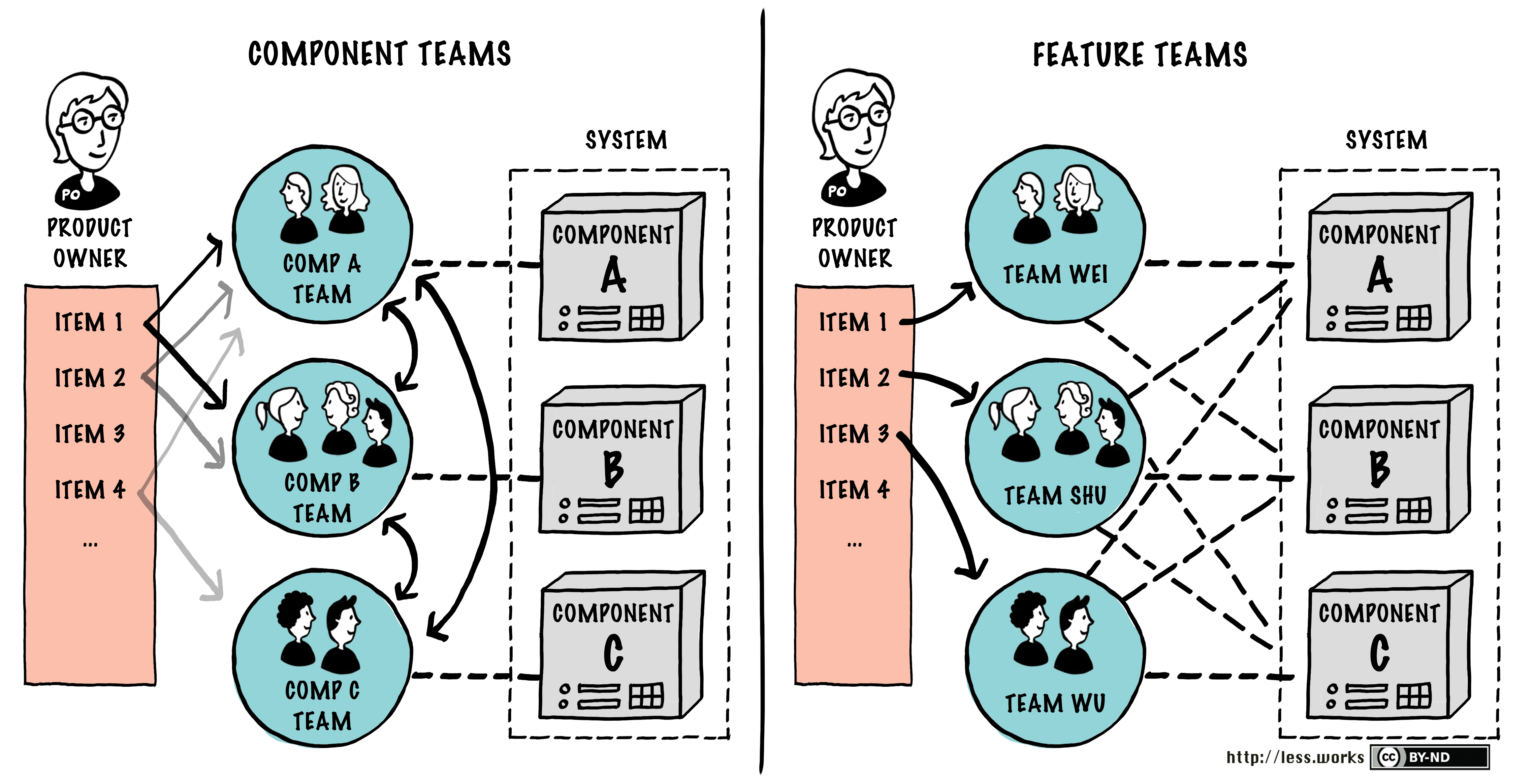Q1: Component teams are typically organized around a layer of the application, such as UI, Data, Platform and can't deliver anything the customer would recognize. Feature teams are organized around customer value and can delivery customer facing features. see image. #Pbrilliant pic.twitter.com/vjHPvAyqLM
— Project Brilliant (@ProjBrilliant) August 21, 2018
So, feature teams need to be cross-functional with all the skills needed to deliver something to the customer, including front-end, back-end, data, security, documentation, testing, architecture, UX/UI, etc.
A feature Team approach is now almost universally accepted way for organizing their teams, as opposed to the technology stack team, especially, in the continuous delivery approach, it emphasizes features (i.e. a vertical slice of system) that solve user needs which can typically accelerate value delivery of any features or working software and shorten the feedback loop from the real users. A feature team would have all the skills to perform the necessary task-level work to get the job done. In particular, assuming a three-tier architecture, team members would work on tasks related to the GUI, middle-tier, and database parts of this story.As suggested by Craig Larman (the author of LeSS Framework).
"a feature team is a long-lived, cross-functional team that completes many end-to-end customer features, one by one.. advantages include increased value throughput, increased learning, simplified planning, reduced waste..."


Comments